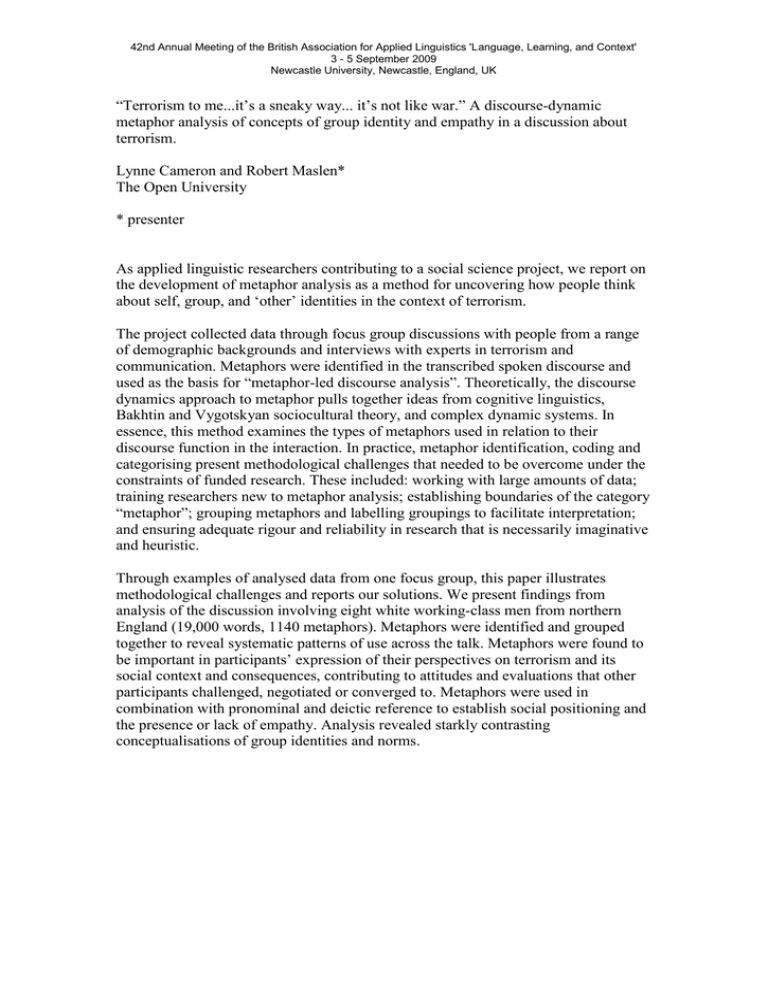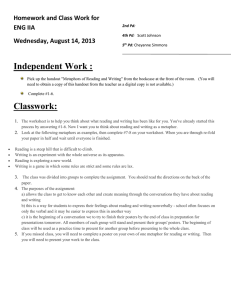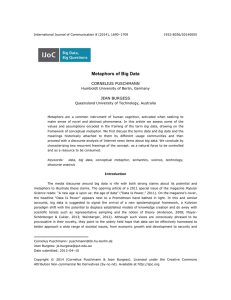Document 15476195
advertisement

42nd Annual Meeting of the British Association for Applied Linguistics 'Language, Learning, and Context' 3 - 5 September 2009 Newcastle University, Newcastle, England, UK “Terrorism to me...it’s a sneaky way... it’s not like war.” A discourse-dynamic metaphor analysis of concepts of group identity and empathy in a discussion about terrorism. Lynne Cameron and Robert Maslen* The Open University * presenter As applied linguistic researchers contributing to a social science project, we report on the development of metaphor analysis as a method for uncovering how people think about self, group, and ‘other’ identities in the context of terrorism. The project collected data through focus group discussions with people from a range of demographic backgrounds and interviews with experts in terrorism and communication. Metaphors were identified in the transcribed spoken discourse and used as the basis for “metaphor-led discourse analysis”. Theoretically, the discourse dynamics approach to metaphor pulls together ideas from cognitive linguistics, Bakhtin and Vygotskyan sociocultural theory, and complex dynamic systems. In essence, this method examines the types of metaphors used in relation to their discourse function in the interaction. In practice, metaphor identification, coding and categorising present methodological challenges that needed to be overcome under the constraints of funded research. These included: working with large amounts of data; training researchers new to metaphor analysis; establishing boundaries of the category “metaphor”; grouping metaphors and labelling groupings to facilitate interpretation; and ensuring adequate rigour and reliability in research that is necessarily imaginative and heuristic. Through examples of analysed data from one focus group, this paper illustrates methodological challenges and reports our solutions. We present findings from analysis of the discussion involving eight white working-class men from northern England (19,000 words, 1140 metaphors). Metaphors were identified and grouped together to reveal systematic patterns of use across the talk. Metaphors were found to be important in participants’ expression of their perspectives on terrorism and its social context and consequences, contributing to attitudes and evaluations that other participants challenged, negotiated or converged to. Metaphors were used in combination with pronominal and deictic reference to establish social positioning and the presence or lack of empathy. Analysis revealed starkly contrasting conceptualisations of group identities and norms.






